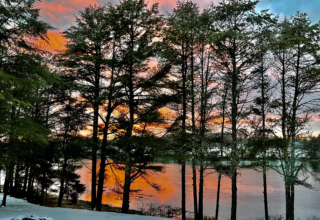
Late Middle Adulthood
We find that the third role often is assigned to the later years of mid-life, as well as our senior years. This generative role is what developmental researcher, George Vaillant (2012), identified as “guardianship”. It is the time when we are serving as maintainer of traditions. We are storytellers, chair of the board rather than CEO, and “old timers” who like the way things have been and should continue to be.
We are in the business of preserving heritage and honoring those who have contributed much to our society. We are legacy-leaders. Generativity Three prevails. We expand our caring in time and expand our attention and action to caring about objects and traditions, not just people. We become holders and promoters of heritage. We are guardians of a world that is in jeopardy of passing away or being ignored. It is not a matter of holding on to the old ways and living with nothing but the old memories—these are the first signs of stagnation. Rather it is a matter of bringing the old into the new and of creating new memories by honoring old memories—this is a sign of generativity.
Senior Years
Like role three, the fourth role is usually engaged during later mid-life, as well as during our senior years. This generative role concerns not just the preservation of what now exists and should be valued in a specific community; it can be engaged now and in the near future to further enhance and enrich it. The generative leaders in this role want both to sustain and build. This takes the form of leadership that often operates in the spotlight during the senior years (60s-90s). It also operates and influences outside the spotlight during many of the earlier years in our lives (as exhibited by many younger, emerging leaders in communities).
In generativity four, we expand our caring in space and expand our attention and action to caring about the welfare of people living in our local community or more broadly our society or even our world. It is in this fourth role that we find the most distinctive contribution to the literature on generativity. This is an area in which we will dig much deeper later in this series, for the role that generativity plays in community leadership (what we call civic engagement) often builds and relies on the three other roles. It is a richly textured form of generativity that is sorely needed in our contemporary world. It requires all the skills, experiences, and motivational incentives to be found in the other three generative roles.
The futurist, Fred Polak (1973), writes about the need for any society to have a clear sense of its own future if it is to thrive. Those engaged in this fourth role of generativity are actively involved in creating and articulating this image of the future, as well as engaging in tangible acts that illustrate and help to animate this image. There may be nothing more important for senior leaders in any society to perform than bringing the past not only into the present but also into the future. What do we wish to preserve from the past? What can we learn from the past (and present) that will help us plan for and engage our collective future? We appreciate what we have learned and “learn into the future” (Scharmer, 2009) by bringing together the old and new.
Download Article














